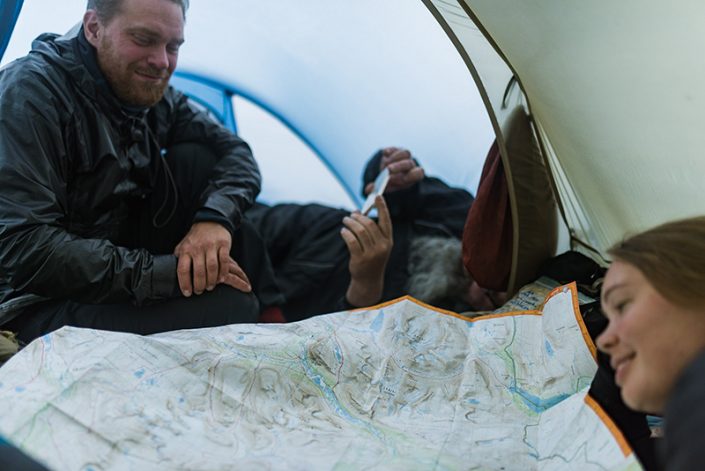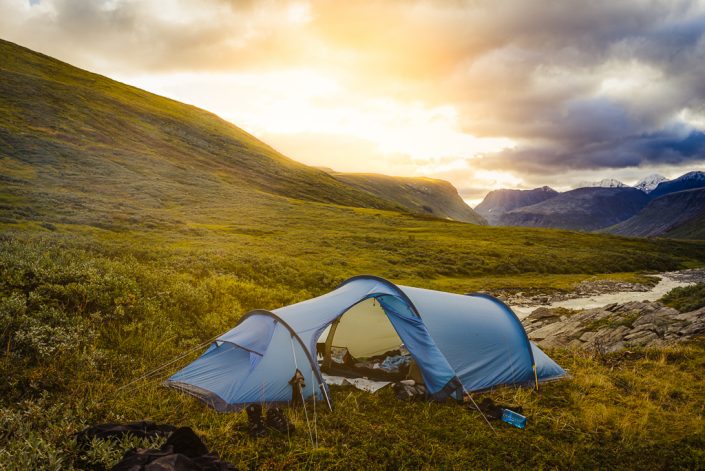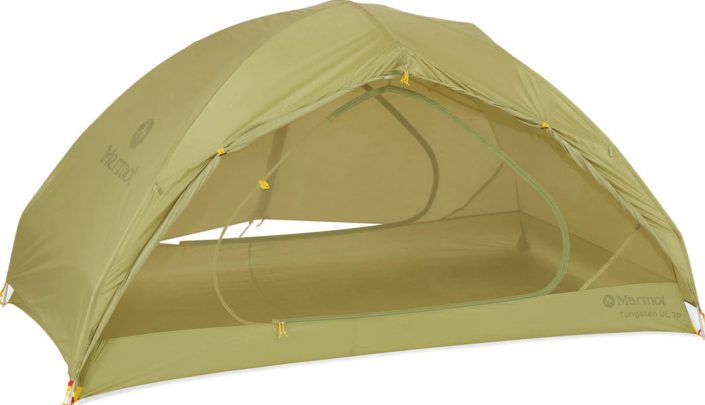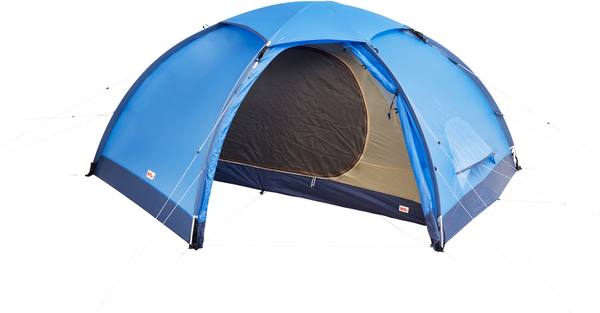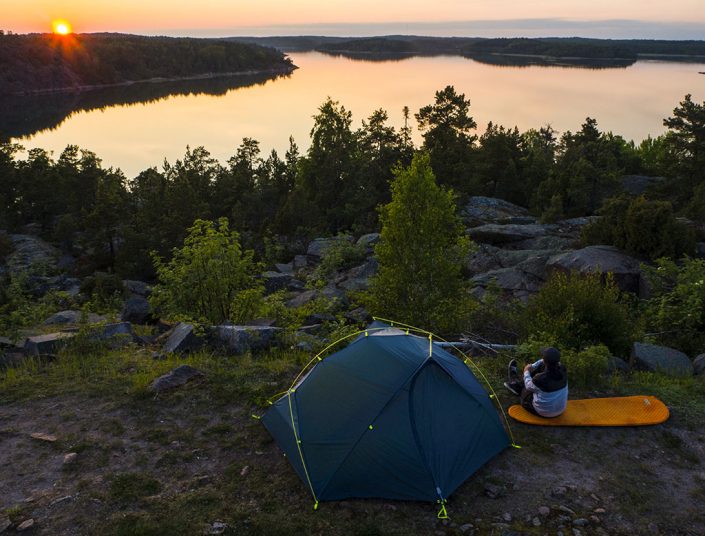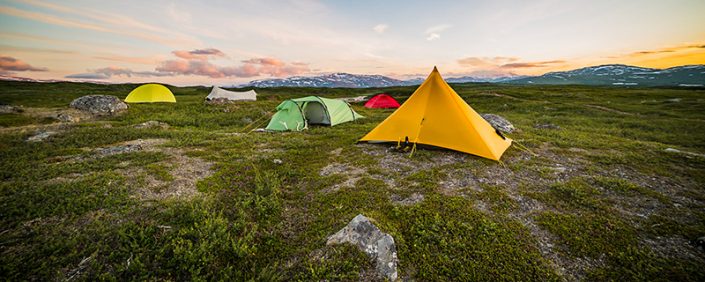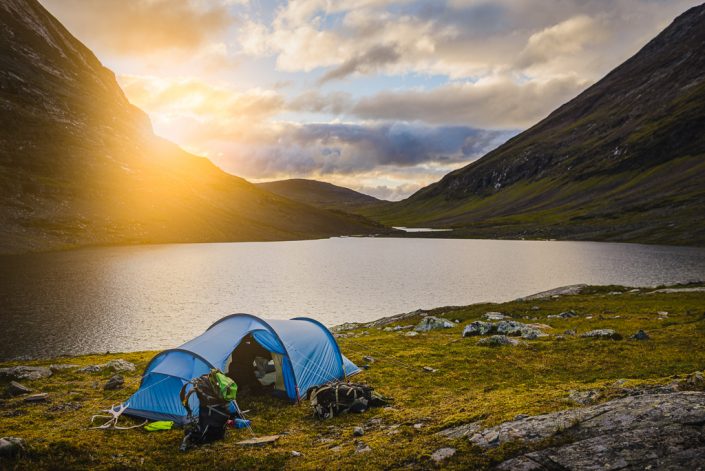

A guide to choosing a tent — tunnel, dome or something else?
Are you considering purchasing a new tent? Our outdoor expert Mikko will give you a few tips to consider when buying a new tent.
A tent is one of the most expensive pieces of gear for a hiker. So it is important to consider the kind of tent you want to buy prior to the purchase. A number of factors will affect your choice, such as the intended use of the tent, where it is going to be used, the season, number of occupants, personal preferences, weight, and price.
A good tent will last a long time, won’t break easily, and keeps its resale value!
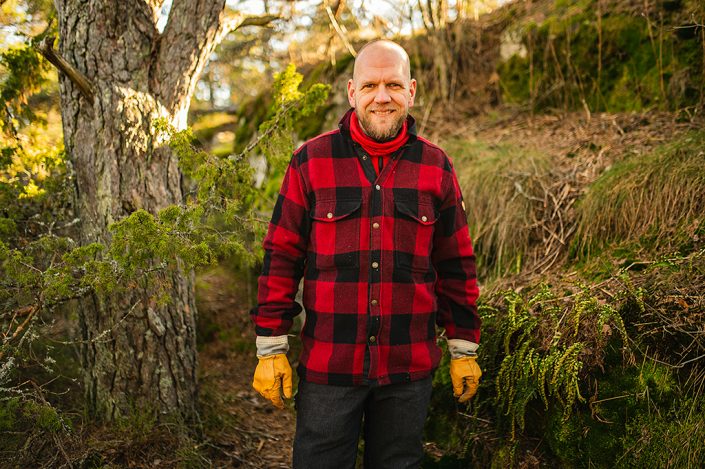 Mikko works as an outdoor specialist at our Turku Hansa shop. Mikko has almost 20 years of experience with helping hikers, and we’re certain that he is a familiar face to many of our customers. Mikko also acts as one of the outdoor experts for our Outdoor Guides.
Mikko works as an outdoor specialist at our Turku Hansa shop. Mikko has almost 20 years of experience with helping hikers, and we’re certain that he is a familiar face to many of our customers. Mikko also acts as one of the outdoor experts for our Outdoor Guides.
MIKKO’S ADVICE FOR BUYING A TENT
What activities do you need the tent for?
Pick the right tent for the right activity. Our Selection of Tents is divided into four categories: Family and camping tents, hiking tents, hammocks and accessories, and tarps and lean-tos.
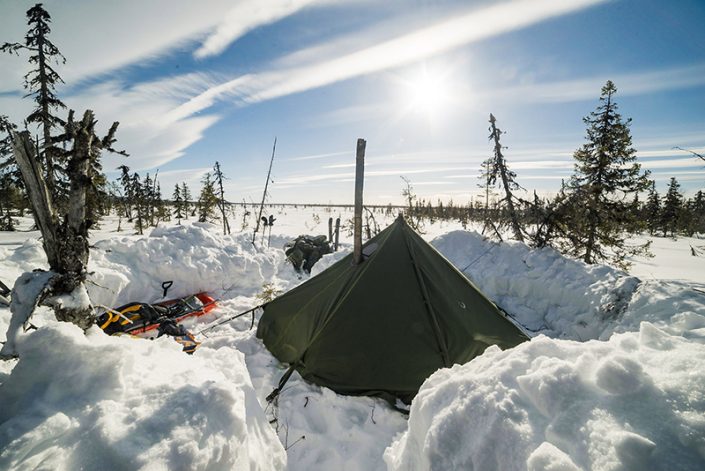 Hawu 4 tent at the Muddus National Park, Sweden.
Hawu 4 tent at the Muddus National Park, Sweden.
Family and camping tents are suitable for Scout activities, families, and general group use, like winter hiking when it is usually a better idea for everyone to share a singe large tent rather than many smaller ones. A large tent also provides more comfort when camping at a camping site or a basecamp style location.
A lighter tent is a more suitable choice for hiking, since a heavy tent is uncomfortable to carry over long distances. Hiking tents are usually lighter than camping tents, and can withstand harsher weather conditions. We will focus more on tips for choosing a hiking tent in this blog post.
We also offer hammocks and tarps as an alternative to tents, but for now we will focus on questions relating to tents.
Tent size – number of occupants
One of the more important considerations when buying a tent is the amount of people that will be using it, which will help determine the size of the tent. We have a handy set of filters to help you out with this on our tent pages.
The number of people may vary according to the trip. Some hikes are done with a friend, sharing a tent, while others are accomplished solo. It would thus be good to decide if you want to compromise by purchasing a tent that is suitable for all occasions, or buying more than one to suit various situations.
You don’t always have to buy a tent with exactly the “right” occupancy rating. Many tent models come in different sizes for different amounts of occupants, but the weight difference between, say, a two person and a three person model might be minimal indeed, so it might be worth some extra weight in order to get more space and comfort.
Vestibule, large or small?
A vestibule is the protected area at the entryway of the tent. It can be used to store gear, cook food, or for sitting in with your buddies, waiting for the rain to stop.
A large vestibule has plenty of space for your gear, and can also be cooked in if you’re careful. Tent manufacturers don’t recommend cooking inside a tent, but it is safe enough if sufficient ventilation is ensured and proper care is taken.
A separate outer and inner tent or both in the same package?
There are two different concepts when it comes to dome tents. One has a separate inner tent with the tent poles along its inner side, and the other concept is where the inner and outer tents are attached to each other, with the tent poles going through pole sleeves along the outer tent.
In Marmot Tungsten UL 2P tent the tent poles are attached to the inner tent. You first erect the inner tent and then button a waterproof outer tent to it. The tent can thus be used with the inner tent alone in the summer heat, providing ventilation and protection against mosquitoes.
Some dome tents, such as the Fjällräven Abisko Dome 2 model, have the tent poles on the outside of the outer tent in the pole sleeves. That way you erect the tent all at once. It is a somewhat useful feature in the rain, since the inner tent won’t have the time to get very wet as you’re setting up the tent. You can unfasten the inner tent from the outer tent, but you can’t erect the inner tent without the outer tent.
In tunnel tents tent poles almost always go on the inside of the outer tent.
Tunnel or dome tent?
The most frequent consideration is whether to choose a tunnel or a dome tent. Both models have their good and bad sides.
Tunnel tents are probably the most popular tent type in the Nordic countries. Tunnel tents have spacious vestibules, their volume to weight ratio is good, and, once the tent is set up facing the wind and its pegs and storm lines are in order, it can withstand gale force winds. Tunnel tents are rather long, so it might sometimes be difficult to find a suitable flat place large enough to set one up at a camp site.
 Fjällräven Abisko Shape 3 withstood the storms at Sarek
Fjällräven Abisko Shape 3 withstood the storms at Sarek
Dome tents have the advantage of a self supporting structure, thus enabling the tent to be erected on a cliff or on a boarded surface. A dome tent will also usually occupy less surface area, making it easier to find a suitable place in tight spots. Dome tents usually have a small vestibule, or don’t have one at all.
Weight of the tent
You should consider the weight of the tent carefully before the purchase. Weight matters on hikes, where the daily distances are long and the camp is moved every day. A small and light tent is also handy on cycling trips and the like.
 You should look at a hiking tent’s weight, a light tent is much nicer to carry on long hikes. A Fjällräven Abisko Shape 3 tent is pictured here under the backpack, with no tent poles.
You should look at a hiking tent’s weight, a light tent is much nicer to carry on long hikes. A Fjällräven Abisko Shape 3 tent is pictured here under the backpack, with no tent poles.
Extremely light tents can be found at our ultralight backpacking section.
A four season or a summer tent?
If the tent will be used all year round, it is worth considering whether you want to purchase a single tent that will also be used in winter, or buy a lighter tent for summer use and another tent to be used separately during the winter season.
Budgeting
It is worth remembering that a slightly more expensive purchasing price might make more sense in the long run. A cheaper tent might have a disappointing lifespan, especially if the tent is going to see much use. Or you might be disappointed enough with your original purchase to buy a new tent, leaving the old tent to gather dust on the shelf. On the other hand, if the tent is only going to be used a few times a year, there is probably no sense in buying the most expensive model.
Setting up a tent and small details
Setting up a tent is always individual. Two outwardly very similar tents might take wildly variable times to set up. There are many small details in tents, in tightening straps, entryways, zippers, and ventilation. When you’re tired from a hike, all that fiddling is always annoying.
You will quickly notice the small differences between a cheaper and a more expensive tent, other than durability and quality, once you have set them up a few times, more than justifying the higher price.
Tent poles
Tents use tent poles made from three different materials. The cheapest tents, meant largely for camping site use, have glassfiber tent poles. Glassfiber is not the most durable option and is often impossible to fix while hiking, requiring replacement of the entire pole.
Hiking tents usually come with aluminium tent poles that can take stronger winds and are lighter than glassfiber tent poles. An aluminium tent pole can be repaired during a hike.
The lightest of tents use carbon fiber poles. Carbon fiber poles are more expensive but also more durable.
Other considerations
You can increase the lifespan of a tent with careful use and maintenance. You should clean the tent before packing it up and store it at home properly dried. Some tent models use wool thread in their seams that have to get moist first in order to swell and make the seal watertight.
This is why you shouldn’t put Seam Sealer on a new tent’s seams, but it can be used at some point to seal the seams on an older tent.
You should also examine the zippers and make sure they don’t have trash, sand, or mud in them. It’s good to give the zippers a clean up with a toothbrush once in a while.
We also offer a lot of tent accessories, some tents come with extras, such as footprints. A footprint is a piece of protective fabric or material that you lay under your tent that provides a moisture barrier and protects your tent floor from damage.
There are a lot of different tents in different price ranges on the market. At first purchasing a tent might seem daunting, but you can turn for help to our outdoor experts. There is always someone on hand to help you at our stores. You are welcome to shop at our online store and at our shops!
Read more:
Choosing a sleeping bag and pad – how to pick a functional pair?
How to pack a backpack for a hike
Posted: 27.3.2020Modified: 16.1.2025
